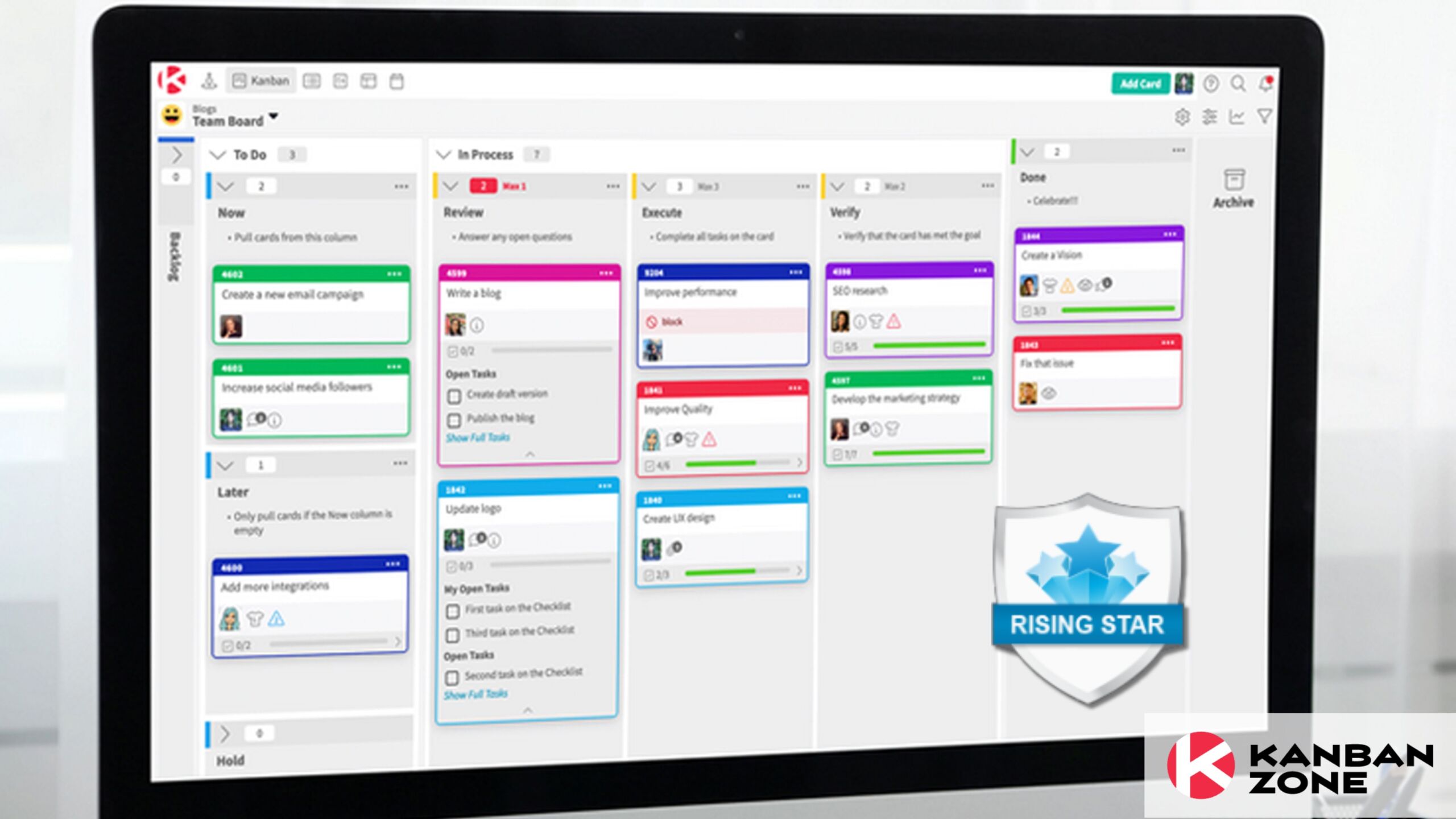Let’s say the average runner needs under an hour to run 6 miles. For most hobby runners improving their time is only for personal satisfaction. But for professionals, tracking their time and improving their result makes all the difference in the world. Cutting a few seconds off their laps means getting closer to victory. So they track not only their time, but other metrics too such as distance, pace, heart rate, elevation. Then, based on these numbers, they adjust their training programs.
But it’s not only athletes that track and measure results in order to become better and faster. We see that everywhere around us. Everyone that strives to improve their productivity and achieve better results tracks progress one way or another.
Measuring results is especially important for companies that focus on understanding and improving their organization’s flow. In lean thinking, flow refers to the way work progresses through a system. When an organization has a “good” flow, work moves steadily and predictably. But when the flow is “bad” work starts and stops. Every time there’s a break in the flow, chances of accumulating waste increase.
Companies that want to ensure reliable delivery and great value to customers strive to create a consistent flow. To do that, they need to implement a system though which they will monitor progress and measure success. Consequently, identify areas of improvement in order to improve speed of delivery.
Improving Your Flow Increases Your Speed
Every team has struggled with their delivery speed at one point or another. To gain or maintain a competitive edge, managers ask their teams to perform the same high-quality work, much faster.
Then, in an effort to meet the manager’s request, many teams begin to develop unsustainable habits. They work haphazardly. They spend less time planning. They don’t take breaks and work longer hours. When working like this, teams work themselves into the ground. They focus intently on speed while sacrificing focus and quality. So teams get exhausted, without significantly increasing speed, especially not in the long run.
Luckily, there is a way to improve the speed of delivery, effectively and sustainably. But it requires switching the focus from increasing your team’s speed to improving your flow. And to do that, you need to track five lean metrics that are built into your flow.
Lean flow is concerned with the way items and people we are dealing with in a process move from the first step to the last. And the intention in lean is to ensure the flow is fluent and the items and products move through the process as quick as possible; without jeopardizing quality or risking customer satisfaction.
Lean Metrics to Improve Flow
As we mentioned before, improving delivery speed and value comes from improving flow. In a system designed to manage the flow of tangible deliverables, for example, a motorcycle assembly line, it is pretty easy to spot bottlenecks. But when it comes to knowledge work, and managing intangible assets, spotting flow problems is more difficult.
That is why many teams that deal that want to implement lean principles use a Kanban board. It helps teams visualize the workflow of their project and organization. Being able to monitor how work flows through the system makes it easier to understand the capacity, identify problems and focus on ensuring the flow runs smoothly. And of course, the Kanban board makes it easier to track important metrics.
When you combine lean metrics with a Kanban system, you can get actionable insights that can help you deliver value in a quicker and more reliable manner, whilst continuously improving the process.
Here are the five key lean metrics you should track in order to improve your flow:
1. Work in Progress and Work in Process
These two are similar, but quite different metrics. Work in progress – the total amount of work that the team has committed to, but has not completed at a specific moment. Work in process – all the tasks (work) that the team is actively working on at a specific moment. Tracking items that are started but not finished can help your team understand where they can speed up delivery by focusing on completing existing work before taking new tasks.
The easiest way to measure work in process is to count and record the number of cards (unfinished work items) on your board each week. Or you can use a cumulative flow diagram. It is also important to compare work in process (and work in progress) items to the WIP limits. The number of items in process/progress should never surpass or be far below the WIP limits. If the team often meets, exceeds or never reaches the WIP limit, learn why that happens. It can be an indicator that the team either misses opportunities for collaboration or there’s a problem.
2. Queues (Waiting States)
When teams want to increase their delivery speed with Kanban, usually they try to reduce the time it takes to complete each task. This is based on the assumption that the active steps have the longest duration. But very often, work spends more time in the wait states between stages. And as work items pile up in the waiting states, they form queues.
When the team limits the time that work items spend in the queues, speed can reduce the overall cycle time and drastically improve speed. You can use efficiency diagrams to identify where work gets stuck. Then, try to find out what you can do to minimize the amount of work that ends up stuck in queues, relative to the total WIP limits.

3. Blockers
The good thing about using a Kanban system is that spotting blockers is much easier. Additionally, most Kanban boards allow teams to mark the work that is not moving forward. Unlike the work items stuck in a queue, blockers are waiting on external dependencies or signal some failure condition. Blockers are an important metric due to their dual purpose. They signal the need for immediate attention and serve as valuable flow indicators.
The simplest way to measure blockers is to count the number of blocked items on the Kanban board. And regularly assess how long they stay blocked. You can do that by reviewing the history for each blocked card. In Kanban Zone, you can block a card and note the reason, so other team members will be in the loop. In order to make use of this metric, monitor the number of blocked items and the reasons why they are blocked. Then, identify improvements that would help you avoid blockers, improve the team’s efficiency and flow.
4. Lead Time and Cycle Time
Lean time is one of the most important metrics for understanding how long it takes for work items to move though the system. It measures the total time, from the moment work is requested to the moment it’s delivered. But the lead time includes process time and time tasks spend in queues. Tracking lead times can help teams make more accurate predictions on delivery times. But long lead times for prioritized work can mean the team is working in an inefficient system.
That is why, when analyzing lead time, teams should also take into consideration specific cycle times. That is, the time it takes work items to move from one step to the next. For example, design, development, marketing cycle time, etc. Understanding how much time tasks spend in each cycle compared to the lead time can help teams identify where they need to make improvements, whether in the active or wait states.
5. Throughput
Throughput is the average number of processed items per a specified period of time. In Kanban, you can track the throughput on a daily level – “cards per day”, weekly level – “cards per week”, or per iteration “story points per iteration”. You can’t always standardize each card to represent equal amounts of work. But you can at least try to set a consistent pace at which cards are moving across the board.
When tracking throughput you can understand the quantity of work you can process over a period of time, and how that impacts your business decisions. Also, take into consideration the effect of outliers in your system when making the calculations. Sometimes, one outside event can drastically change the entire workflow. But keep in mind that throughout is an average, and should not be taken as a single variable when making estimations of future deliveries, except for short-term predictions. To be more effective, take throughput either as a trend or in combination with other metrics.

Start Tracking Now
Improving your flow is a task that has a starting point, but no finish line. There will always be changes and tweaks you can make to your process or system that can help you improve your flow and increase speed of delivery. But you have to take the time to carefully monitor, track and analyze how work items move through the system and identify the best ways to deal with blockers and work more effectively.
Remember that with flow, the goal is to consistently create economic value, not having the fastest cycle times or highest throughput. Creating and maintaining a steady flow through your Kanban system and at the same time, improving the team’s focus, building up their morale, and delivering sustainable quality is the only way you can ensure value is delivered quickly and reliably to your team, organization, and ultimately, to your customers.
However, nothing happens in an instant. It takes time, knowledge and understanding which lean metrics best fit your business needs. Then, tracking, measuring and implementing changes that will help you improve your process, over and over again.
Learn to Work Smarter, Not Harder!
Get our top articles weekly.
Table Of Contents
Discover many more posts…







